- Quick Read
- Deep Read ( 7 Min. )

Why is Christian Science in our name?
Our name is about honesty. The Monitor is owned by The Christian Science Church, and we’ve always been transparent about that.
The Church publishes the Monitor because it sees good journalism as vital to progress in the world. Since 1908, we’ve aimed “to injure no man, but to bless all mankind,” as our founder, Mary Baker Eddy, put it.
Here, you’ll find award-winning journalism not driven by commercial influences – a news organization that takes seriously its mission to uplift the world by seeking solutions and finding reasons for credible hope.
Explore values journalism About usIn Today’s Issue
- ‘Why did we fight?’ Challenge of governing is wearing down Taliban.
- European Union’s balancing act: Democracy with unity
- In New Mexico, a wildlife refuge with urban roots
- ‘Not ivory towers’: HBCU activist-in-residence nurtures hope, activism
- Sci-fi classic ‘Dune’ returns to the big screen. Does it succeed?
Monitor Daily Podcast
- Follow us:
- Apple Podcasts
- Spotify
- RSS Feed
- Download
TODAY’S INTRO
Does unity matter? Our headlines suggest yes.
 Mark Sappenfield
Mark Sappenfield
The European Union has a problem. What should it do about two countries (Poland and Hungary) that are blatantly violating democratic rule of law. The debate should sound familiar, no matter where you live: Basically, do we draw a hard line, or do we appease?
That’s the question at the heart of Ned Temko’s Patterns column in today’s issue. German Chancellor Angela Merkel offers a characteristic answer: “Europe is only as strong as it is united.” That can sound like political happy talk. But it’s not.
In many ways, today’s entire edition examines that broader idea: What is true unity?
Are the Taliban really interested in creating a Pan-Afghan society built on the Islamic ideals of justice, or is that just a cloak for an opportunistic power grab? Early evidence points to the latter, Scott Peterson writes. So Afghanistan is again in danger of fracturing.
Meanwhile Henry Gass and Ashley Lisenby examine two examples of communities coming together to try to build a sense of unity through hard work – turning to nature in Albuquerque, New Mexico, and, at a university in Texas, a desire to create genuine equality in all spaces.
It’s that work that Chancellor Merkel is talking about. Unity is difficult. As the Taliban are finding, it’s easier to take shortcuts or to leave some people out. But ultimately, that doesn’t work. Unity is not a “nice to have.” It won’t mean unanimity, but even as a work in progress, it’s an essential foundation stone.
Share this article
Link copied.

Help fund Monitor journalism for $11/ month
Already a subscriber? Login

Monitor journalism changes lives because we open that too-small box that most people think they live in. We believe news can and should expand a sense of identity and possibility beyond narrow conventional expectations.
Our work isn't possible without your support.
‘Why did we fight?’ Challenge of governing is wearing down Taliban.
Taking over Afghanistan, it turns out, was the easy part. Now the Taliban’s lack of vision or capacity to govern is being exposed, and patience is wearing thin.

Despite their lightning victory in August, many Taliban are expressing disappointment, and disillusion, with what their sacrifice has bought.
To be sure, there is peace today and relative security, a balm to all Afghans after 40 years of war. And Taliban leaders, fighters, and many Afghans welcome restoration of the self-declared Islamic Emirate.
But the Taliban are fast finding that winning a war is easier than governing, say analysts, and are overwhelmed by the challenge of feeding and ensuring services to some 40 million people. Amid widespread drought and displacement, and with no cash and no plan as winter approaches, a multitude of rifts are emerging among the Taliban.
And they are already breeding resentment – between regions, between haves and have-nots as they tussle over the spoils of victory, and between those who dreamed of an Islamic revolution but are getting a power grab by a movement that never thought through the basics of ruling an entire nation.
Rahmatullah, a veteran fighter, voices concern about what the internal rifts could mean. “Maybe some of the Taliban will change their ways, and leave the Taliban forever,” he says. “Now is the time for our leaders to live up to their promises to the Afghan nation.”
‘Why did we fight?’ Challenge of governing is wearing down Taliban.
The veteran Taliban fighter once strove for martyrdom on the Afghan battlefield of what he considered an Islamic revolution.
But the Taliban insurgency’s lightning victory in August has yet to bring a long-promised paradise, says Rahmatullah. Instead, he fears, it’s revealing internal divisions, even resentment.
“We struggled and fought in extreme poverty. Now our leaders are ruling and have luxury cars and lots of facilities, but the majority of mujahideen don’t have salaries and their families are worse off,” says the fighter, who uses one name.
“Some of the lower echelons of the mujahideen are now wondering, ‘What was the benefit of our struggle, and why did we fight?’”
To be sure, there is peace today and relative security, a balm to all Afghans after 40 years of war. And Taliban leaders, fighters, and many Afghans welcome restoration of the self-declared Islamic Emirate, and its strict interpretation of Islamic law.
But the Taliban are fast finding that winning a war is easier than governing, say analysts, and are overwhelmed by the challenge of feeding and ensuring services to some 40 million people.
The transition to governing has been made more difficult by the shut-off of critical cash from Western donors – money that propped up Kabul governance for years – as well as widespread drought and displacement, as winter approaches.
With no cash and no plan, a multitude of rifts are emerging among the Taliban. And they are already breeding resentment – between regions, between haves and have-nots as they tussle over the spoils of victory, and between those who dreamed of an Islamic revolution but are getting a power grab by a movement that never thought through the basics of ruling an entire nation.
“There is a clear understanding among the leadership that it’s way more problematic than they thought it would be, so right now they are under pressure to control their own men,” says Rahmatullah Amiri, a Kabul-based independent expert on the Taliban.
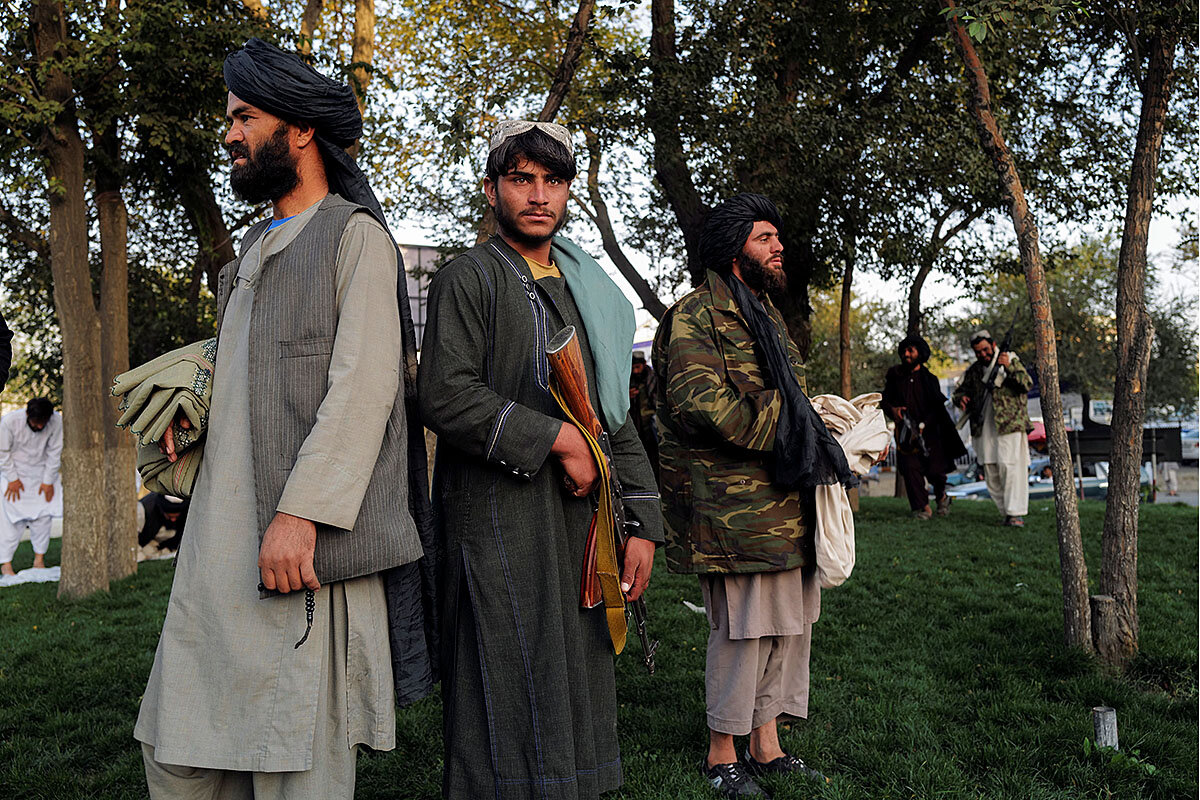
The Achilles’ heel of Taliban rule may not be the threat from militants like Islamic State, he says, but how the dangers of mass hunger and a failing economy might exacerbate intra-Taliban divisions and spark broader discontent.
“The biggest thing they didn’t think about is the economy,” says Mr. Amiri, noting the importance of Western donor funds resuming. “This is way beyond their imagination, way beyond their capacity to understand.”
It’s no longer just about residents of rural and often remote areas under insurgent Taliban control, he says. “It’s about millions and millions of people.”
Leaders’ promises
When the Monitor first met Rahmatullah in February 2020 – the day after he had helped blow up a nearby bridge – the fighter whose nom de guerre of Mullah Sarbakhod means one who rushes forward wildly, without thinking, was already expressing distrust of Taliban chiefs, “if they prefer money or promotions to the dangers of the front line.”
Interviewed this week in Wardak province, southwest of Kabul, he cites frequent disputes over confiscated vehicles and property, and instances where Taliban from southern provinces like Kandahar and the Haqqani network tell groups like his, from Wardak, to leave the capital and “return to their villages,” sowing resentment as they impose their own grip on power.
“I am sure if they don’t solve these problems, dissatisfaction will arise and lead to conflict in the future. Maybe some of the Taliban will change their ways, and leave the Taliban forever,” says the fighter. “Now is the time for our leaders to live up to their promises to the Afghan nation.”
Failure to meet expectations – among Taliban faithful and civilians alike – could lead to an unraveling for the jihadis, who are already deeply unpopular in many provinces, and often thin on the ground.
“They don’t have the means to provide economic improvements to the community, and people get hungry,” says Mr. Amiri. “Crime will increase. A time could come when people will take arms against them because of lack of jobs.”
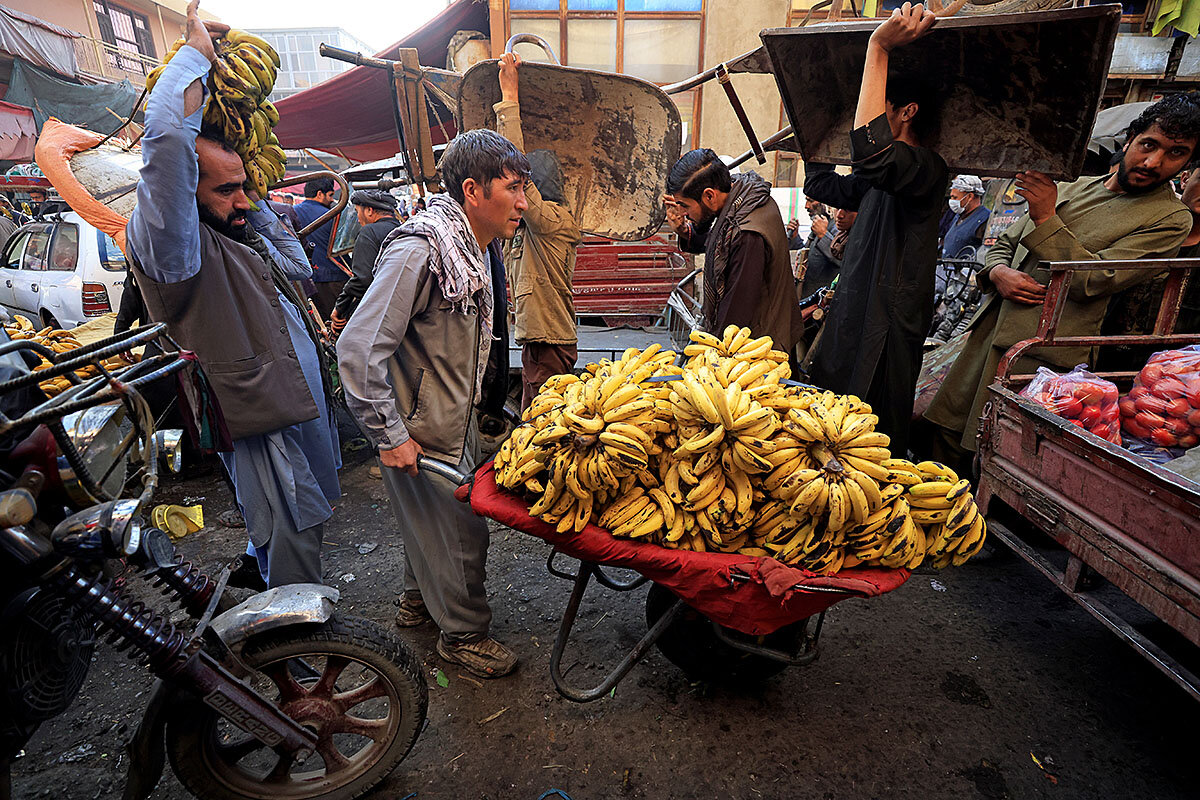
A father’s story
That would not surprise the father of Mullah Zahid, a 22-year-old former Taliban fighter who joined the insurgency at the age of 16 in Wardak province but today exemplifies how some true believers have been forced to steal to get by.
According to his father, Mullah Zahid said, “The Taliban promised us that after victory they would give important positions; everyone will be paid a good salary.” But the son received no money while deployed in Kabul, and ate only bread and water, recounts the father, who was contacted in Kabul and asked not to be named.
Mullah Zahid told him: “There was nothing to eat, so we started stealing because there was no other option. Several times we stole from people’s houses, and it was a big shame for us to threaten people to pay us. Also, we stole computers from government offices and sold them in the bazaar, and sold our weapons, for food money.”
Such moves were once unthinkable, from a group that made its name imposing harsh punishments like amputating the hands of thieves.
When Mullah Zahid asked Taliban officials to pay for food, he was told to keep waiting. “We saw they had luxury cars and homes; they had a lot of money and enough food, but we were always hungry,” his father quoted him as saying.
Last week, Mullah Zahid left the Taliban and went to Iran, in search of work.
“There was no jihad,” says the father. “The Taliban fights for money and power, but our sons give big sacrifices. We will never forgive them.”
“An ill-thought-out power grab”
Such sentiment will do little to help the Taliban consolidate power, as the former insurgents struggle to satisfy a population dramatically changed since the Taliban last ruled Afghanistan 20 years ago.
“A lot of Afghans have concluded it isn’t an Islamic revolution; it’s an ill-thought-out power grab, which rather delegitimizes the Taliban,” says Michael Semple, an Afghanistan expert at Queen’s University Belfast and former adviser to the European Union in the country.
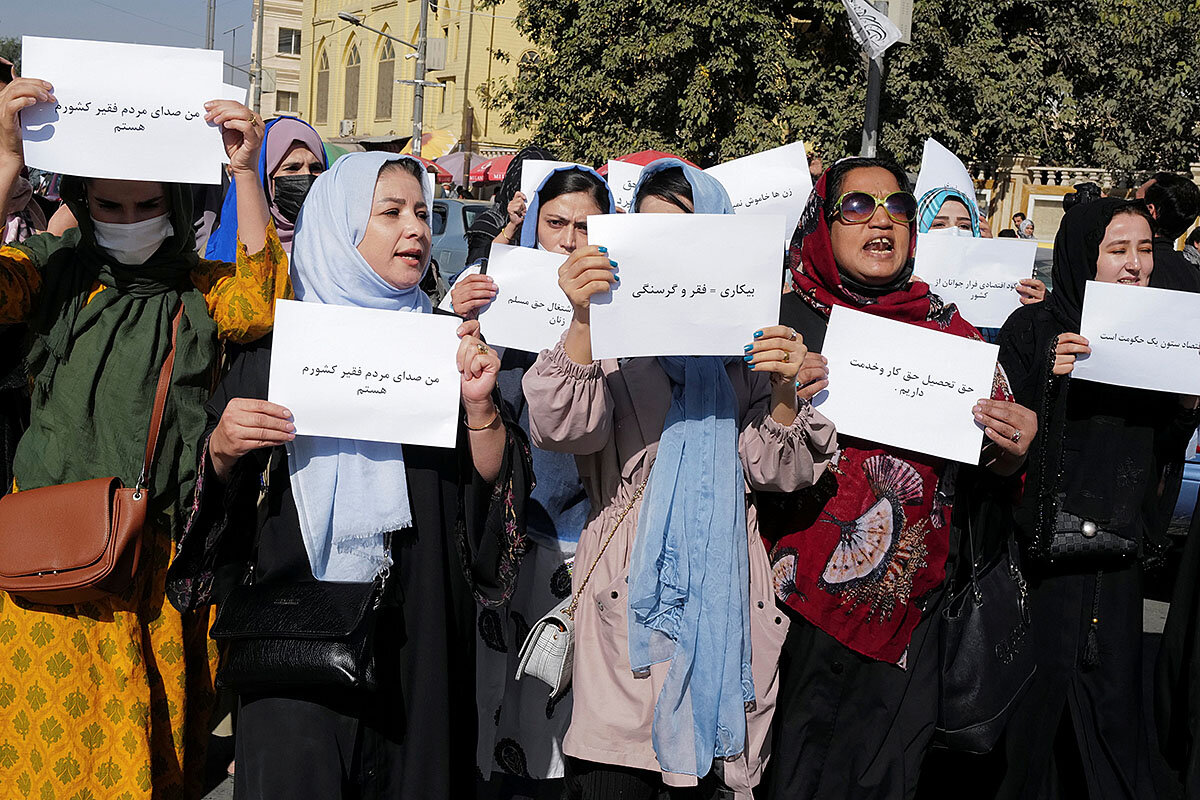
Another abiding impression among Afghans is that the Taliban “are steeped in their clannishness,” and used their power grab “to distribute the fruits of victory within their own very well-defined circles, so there’s no issue of serving the population,” says Mr. Semple.
One scenario Afghans suggest is that “the sheer inability of the Taliban to cope ... means they really won’t survive more than six months – I think that has to be taken seriously,” he says.
Yet, whether or not an overthrow is even feasible, the “basic point is the current Taliban administration is incredibly, inherently fragile, for now,” Mr. Semple says. “There’s nothing inevitable about the Taliban remaining in power in this form.”
Recognizing that risk for themselves, the Taliban “really are moving fast to deploy an authoritarian apparatus to try and snuff out all forms of resistance, civil or military, before they really take hold,” says Mr. Semple.
An obligation to improve lives
But the Taliban are finding that they control far fewer variables than they once did, when they could count on widespread anger about the foreign military presence, corruption in Kabul, and their Islamist message to fill their ranks.
Suleiman Roostami, a long-bearded and young-faced Taliban district commander in Wardak, is hopeful that his years of fighting were not in vain, and that Taliban chiefs “will give the rights to all people, including women.”
At the same time, he voices concern that the quest for power by some in the Taliban will overshadow their obligation to improve the lives of the Afghan people.
When the Monitor first met Mr. Roostami in early 2020, he noted the futility of continued war – a realization that stemmed from an attack by his unit on a police post. A dozen people died in that clash, but nothing changed. He expressed the hope then that both his young sons and daughters could all be educated.
But now he tells how his unit, among the first to enter Kabul, was forced to hand over vehicles, captured facilities, and heavy weapons to Taliban from Kandahar and the Haqqani network. They “despise” Wardakis, he says, and “are seeking to gain more power ... which may become a big problem in the future [and] very bad for the Taliban.”
Also important is “social justice” for fighters who have sacrificed for years, he says. Failure to provide that could mean most regional Afghan warlords “will be against the Taliban, and it will pave the way for a new conflict and war,” says Mr. Roostami.
Taliban leaders should also improve citizens’ quality of life, says Mr. Roostami. “If they don’t pay attention to this, I am sure all the nation will be against us.”
Hidayatullah Noorzai and a correspondent in Maydan Shar, Wardak province, contributed reporting for this article.

Patterns
European Union’s balancing act: Democracy with unity
Two European Union countries are breaking the bloc’s rules on democracy. How can they be brought back into line? The question has deep consequences for the Continent and beyond.

- Quick Read
- Deep Read ( 4 Min. )
The European Union is going through an existential identity crisis that is bound to have repercussions in the wider world. At its heart, it is a manifestation of what U.S. President Joe Biden calls the defining issue of our era: the contest between democracy and autocracy.
The EU is wrestling with how to treat two members, Poland and Hungary, whose governments are challenging the union’s core democratic principles, including press freedom, judicial independence, and the rule of law. How to defend those principles, while holding the European Union together?
The EU could go for a showdown, and withhold budget funds from so-called illiberal democracies such as Poland and Hungary. But such a confrontation carries political risks that some leaders are reluctant to run.
In one of her last acts as German chancellor before she steps down, Angela Merkel is counseling caution. “We have the duty always to try to find compromise, without giving up our principles,” she says. “Europe is only as strong as it is united.”
European Union’s balancing act: Democracy with unity

Call it the geopolitical equivalent of a midlife crisis or perhaps a case of delayed adolescence. Either way, the dramatic identity check underway in the European Union, the world’s third biggest economic power, stands to affect the wider world.
At its heart, the crisis is a manifestation of what U.S. President Joe Biden has framed as the defining political issue of our 21st century world, the contest between democracy and autocracy.
The EU’s 27 leaders, convening for a summit today, are wrestling with an existential question: how to treat Poland and Hungary, once Soviet-bloc members, who are challenging the union’s core democratic principles, including press freedom, equal rights for minorities, judicial independence, and the rule of law.
The ideological choice is not really in question. The EU’s political values enjoy overwhelming support among both national leaders and the European public. But the debate over how to bring the self-declared “illiberal democracies” of Poland and Hungary into line gets tangled in a web of competing internal and international political priorities.
That’s where navigating the identity crisis gets especially tricky.
A powerful economic union that has morphed and expanded from an initial six-nation trade pact seven decades ago – with World War II foes France and West Germany as its fulcrum – is having to defend its values while also holding itself together on a continent, and in a world, changed beyond recognition.
As the summiteers gather, they have a powerful tool to deploy in driving the democratic message home: They could withhold billions of euros in EU social, economic, and COVID-19 recovery funds. Poland and Hungary are major beneficiaries of an EU budget largely funded by wealthier member states.
The immediate focus of controversy is Poland, the most likely to suffer from a recently adopted European Commission rule that makes some budget aid dependent on respect for the rule of law.

Warsaw first provoked EU wrath by subjecting its judges to political control. Now it has compounded Brussels’ anger: When the EU Court of Justice ordered the Polish government to correct that situation, the Polish constitutional court ruled this month that national law overrode such an EU judgment.
“This ruling calls into question the foundations of the European Union,” European Commission President Ursula von Leyen told the European Parliament on Tuesday.
“The rule of law is the glue that binds our union together,” she added. “We cannot and we will not allow our common values to be put at risk. The commission will act.”
Still, even as pressure has built to withhold EU funds from Poland, some leading European leaders are worrying about the potential repercussions of such a showdown.
Could it play into the hands of the Polish and Hungarian leaders – allowing them to portray Brussels as heavy-handed – even as they are beginning to show signs of political vulnerability at home?
Would it breathe new life into euroskeptic parties in a number of member countries where currents of concern about overly centralized EU power run strongly – just when the pandemic and Britain’s post-Brexit travails have strengthened the case for unionwide coordination?
Finally, might it further embolden Russian President Vladimir Putin, who views his former Soviet-bloc neighbors as within Moscow’s natural sphere of influence and bridled at their joining the EU and NATO?
These rumbles from the east are resonating with particular force now. The Russian-backed dictatorship in Belarus, sanctioned by the EU over its diversion of a civilian flight in order to detain two dissidents, has retaliated by welcoming tens of thousands of Middle East asylum-seekers and routing them to the Polish border. Many who manage to cross that frontier have made their way to Germany.
Few EU leaders are voicing this range of concerns publicly amid the debate over how to reassert the political values underpinning the union.
Yet the message of caution has been unmistakable, and German Chancellor Angela Merkel – now in a caretaker capacity, but still the EU’s most influential voice – put it succinctly last week.
“I think now is the time to talk in depth with the Polish government,” she declared. “We have big problems, but my advice is to solve them in talks. We are all member states of the European Union, which means we have the duty always to try to find compromise – without giving up our principles.”
Part of this was classic Angela Merkel. The enormous influence she has built up during her decade and a half in power has rested largely on her role as a force for stability, and her ability to bring opposing views together.
Yet she seemed also to be conveying a deeper message: that getting the EU’s future role and identity right was bound to be a difficult task, and that it was too important to rush.
Above all, she insisted, especially in the wake of Britain’s departure from the EU, the union should stick together. “Centrifugal forces have been at work in the EU for several years now,” she noted. “Europe is only as strong as it is united.”

In New Mexico, a wildlife refuge with urban roots
This wildlife refuge is unusual for its focus not just on habitat but on serving an urban community. As the U.S. grows increasingly urban, it could become a model.

- Quick Read
- Deep Read ( 6 Min. )
Valle de Oro National Wildlife Refuge has a distinction: It’s the first national wildlife refuge to be purpose-built in an urban area. Right now it’s as much construction project as habitat.
But even when wetlands and saltgrass meadows come to life here, the location will still have fuel terminals and salvage yards dotting the horizon in Mountain View, a neighborhood in south Albuquerque, New Mexico.
Forty federally regulated facilities, two Superfund waste sites, and a sewage treatment plant sit between the refuge and downtown Albuquerque 7 miles away, thanks to decades of industrial growth and strategic rezoning. While the refuge aims to restore natural flood plain habitat, the bigger priority is something else – serving the visitors themselves through a focus on community development, environmental justice, and youth outreach.
At a time when an estimated 83% of the country’s population lives in urban areas – with 89% projected to do so by 2050 – the approach at Valle de Oro could become increasingly important. And its very existence is a testament to community engagement.
Resident David Barber explains: The community “came together and fought hard for a long time to make sure that this property became something that [we] could be proud of.”
In New Mexico, a wildlife refuge with urban roots
From her office in the visitor center at the still-under-construction Valle de Oro National Wildlife Refuge, Jennifer Owen-White has a perfect view of the fuel terminals and salvage yards that dot the horizon.
One day soon, there will be wetlands, trails, and saltgrass meadows in the foreground. But those fuel tanks and junked cars will still loom like a storm cloud in the distance, an “important reminder,” says Ms. Owen-White, of “what my job is and why this refuge exists.”
Valle de Oro represents something of a new dawn for Albuquerque, and in particular for Mountain View – this neighborhood in the city’s south valley. Forty federally regulated facilities, two Superfund waste sites, and a sewage treatment plant sit between the refuge and downtown Albuquerque 7 miles away, thanks to decades of industrial growth and strategic rezoning. For Mountain View residents, it has been decades of nature beating a slow but steady retreat from the area.
There are 565 national wildlife refuges across the country – all managed by the U.S. Fish and Wildlife Service – and 101 of them are technically considered urban wildlife refuges. Most of those, however, became “urban” over time as cities grew near them. FWS and the Mountain View community are doing something different in Albuquerque’s south valley.
Occupying 570 acres on the site of a former dairy farm, Valle de Oro is the first national wildlife refuge to be purpose-built as an urban refuge – an approach that, in essence, turns the traditional wildlife refuge dynamic on its head.
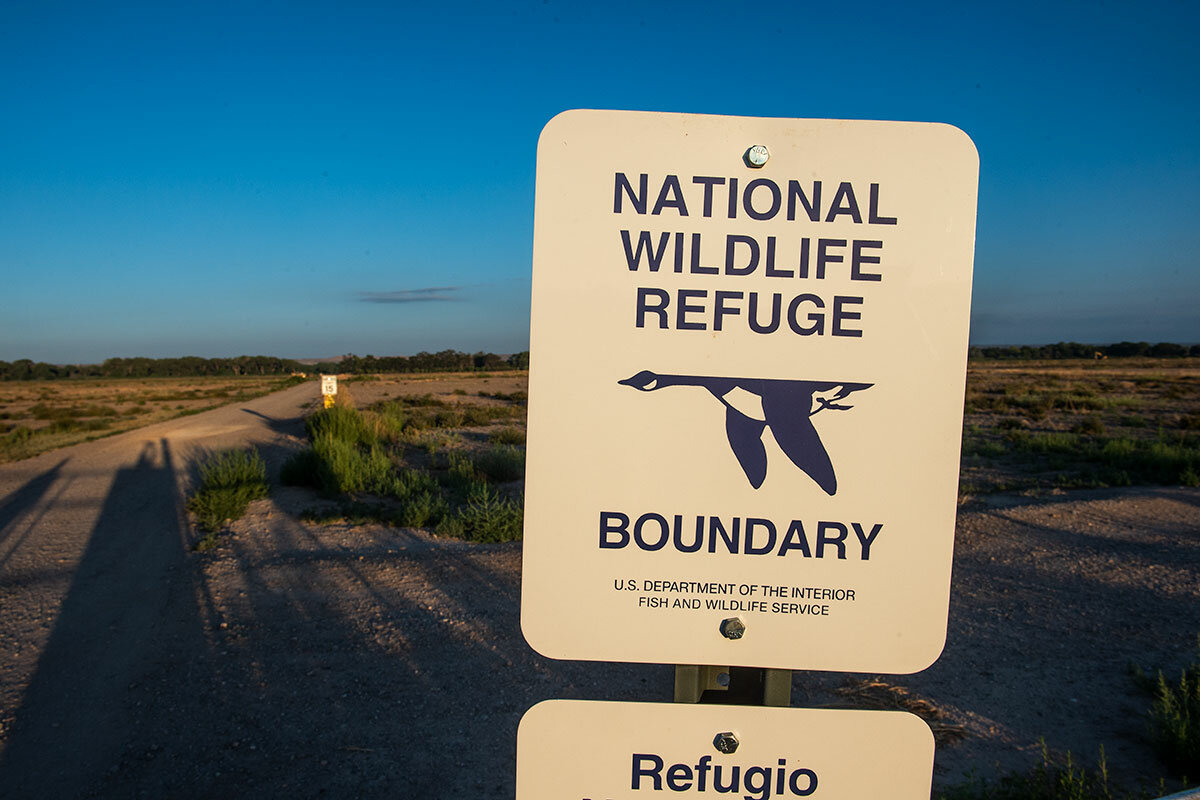
Yes, the refuge aims to restore a natural flood plain where wetlands, grasslands, and dry habitats attract a variety of different species. But its bigger priority is something else – serving the visitors themselves through a focus on community development, environmental justice, and youth outreach. At a time when an estimated 83% of the country’s population lives in urban areas – with 89% projected to do so by 2050 – the approach at Valle de Oro could become increasingly important.
“It’s a model in this country for how to create these refuges for habitat, for people, and for wildlife,” says Gabe Vasquez, the strategy and partnership director at HECHO (Hispanics Enjoying Camping, Hunting, and the Outdoors). “In a dusty, low income neighborhood, having access to [nature] is really gold for people in those communities.”
Under construction, yet open for visitors
Since it opened in 2012, the refuge has been under heavy construction. But even as remediation work has been ongoing, the public has been able to freely access most of the refuge – something that FWS typically doesn’t allow.
“We wanted to make it so that people could come and see what was happening,” says Ms. Owen-White, “especially because it was their idea.”
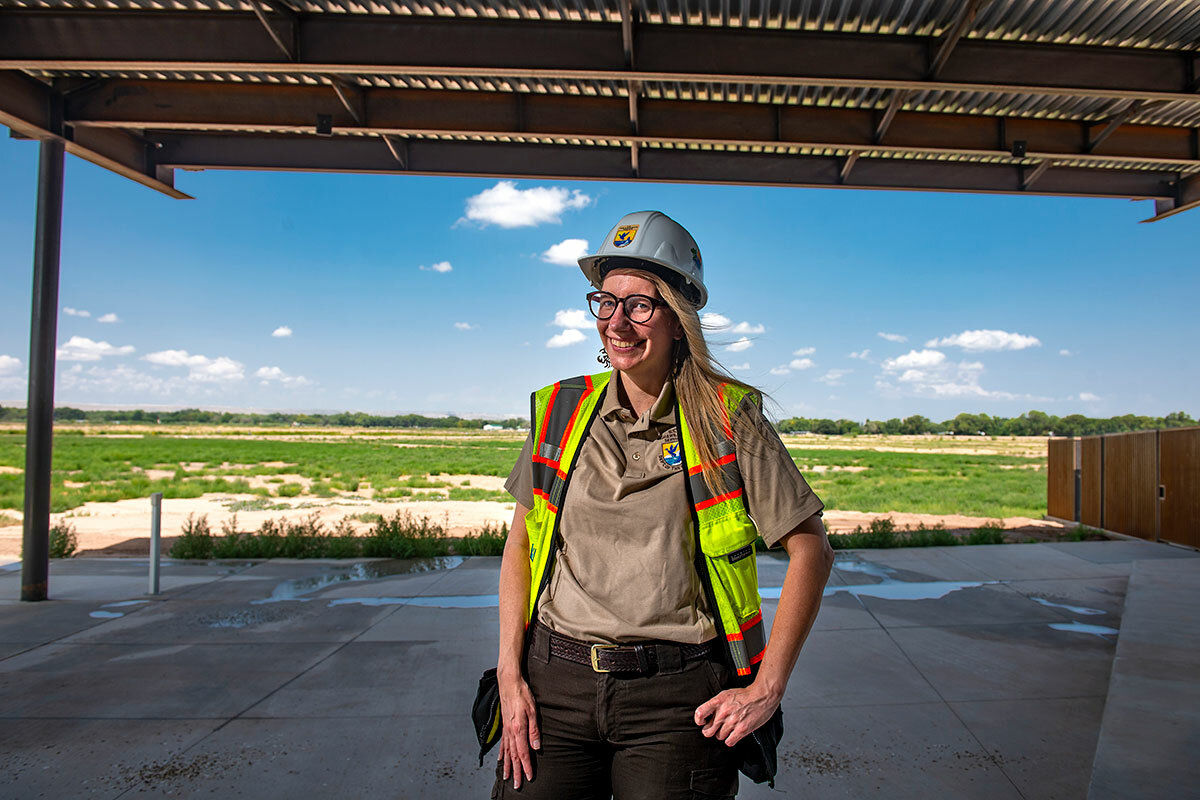
Indeed, protecting the 570 acres from development is something the Mountain View community had been fighting for long before FWS arrived.
With about 6,000 residents – of which about 80% are Hispanic, according to U.S. census data – Mountain View is one of the oldest neighborhoods in Albuquerque. The elementary school is over a century old (albeit rebuilt in 2017), and some families have lived here for five generations. Once mostly agricultural, the community saw zoning changes in the 1970s draw a concentration of industrial activities to the south valley. For decades, the area has had some of the worst air and water quality in Albuquerque.
An “old, tightknit community”
David Barber has called the neighborhood home since 1994, and he’s shared what could be described as typical Mountain View experiences. He’s shoveled his driveway back into place after a storm washed it out, and he spent years not even letting his dogs drink the tap water. But he’s also never locked his back door, and he’s grown to love what he calls the “old, tightknit community.”
“There’s a lot of pride down here, even if we have to look at junkyards to get to our house,” says Mr. Barber.
For three years he’s served as president of Friends of Valle de Oro, a local group that helped found – and is now helping develop – the refuge. It was the community, more than the wildlife, that first got him involved with the group, he says.
The community “came together and fought hard for a long time to make sure that this property became something that [we] could be proud of,” he adds.
“We want to maintain a green space and keep this available for all of the community for a long time to come.”
Already, Valle de Oro has been used to host community events and visits from local schools. There will be spaces in the visitor center for community meetings, as well as a shop and office for the Friends group. A “Voices From the Valley” oral history exhibit in the center will let visitors listen to local residents describe the community and its history. Local children will be able to work at the refuge during summers, and perhaps even longer. (Four of the refuge’s nine current staff came through youth programs, according to Ms. Owen-White.)
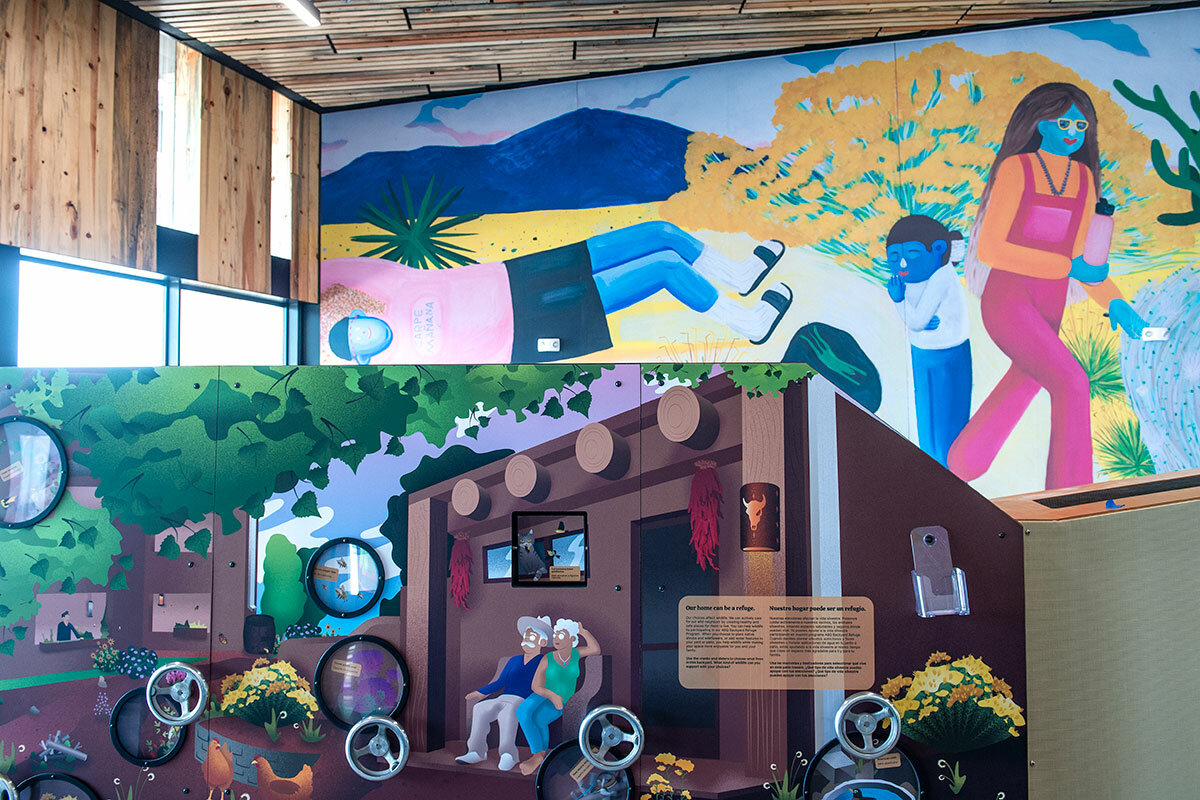
And then there’s the refuge itself. Valle de Oro’s natural habitat will help control floodwaters and clean stormwater. Part of the refuge’s daily operations will be the monitoring of ground and surface water contamination. There will be mosaics and murals from local artists, and spaces for outdoor classrooms and stargazing.
And while the refuge will be available for everyone to visit, its resources and programming will prioritize Mountain View residents, something Mr. Vasquez says is critical for any purpose-built urban wildlife refuge.
Refuge managers need to “target the populations that these refuges are intended to serve,” he says. Otherwise it’s “just the same [regular] visitors to a wildlife refuge.”
“Valle de Oro is such a great example of how you do that at the beginning.”
A model for the future?
The refuge has been blazing some trails as one built intentionally for an urban community.
It’s the first refuge established under the FWS’s Urban Wildlife Refuge Standards of Excellence, and the first with a community-based Environmental and Economic Justice Strategic Plan. And then there are the other firsts: the first wildlife refuge to stay open to the public while it’s being remediated, and recipient of a first-of-its-kind Urban Night Sky Place designation.
“Any time we turn around, we’re first at something,” says Mr. Barber. “We get a lot of people inquiring, ‘How did you do that?’”
These are all roadmaps other urban wildlife refuges could follow in the future – and urban wildlife refuges are going to be key to the future of conservation in America. FWS is seeking to do this through a dedicated Urban Wildlife Conservation Program, but as more Americans live in urban areas, keeping them connected to nature will be increasingly important, says Mike Leahy, a senior manager at the National Wildlife Federation.
“It’s hard to appreciate and understand something you don’t really have any connection to,” he adds. “And if you don’t have any connection you’re probably less likely to take action in support of something.”
That need is particularly acute in Mountain View. And it strikes at the heart of how Valle de Oro hopes to be different from a traditional wildlife refuge.
“Our focus is really on people, and connecting people with the land,” says Ms. Owen-White.
Wearing a bright reflective vest and hard hat over her FWS uniform, she is speaking on a warm late-summer afternoon outside the visitor center. The scene captures Valle de Oro’s current state of transition. Backhoes and heavy construction equipment growl in the distance while cliff swallows, which are already nesting in the roof of the nearby amphitheater, chirp and flutter overhead.
Helping visitors understand that Valle de Oro isn’t a normal wildlife refuge – that it’s dedicated more to the Mountain View community than any specific kind of flora or fauna – is one of their biggest challenges, she says. The landscape will not be the most awe-inspiring in the Mountain West, but the story of how it came to be could be.
“Without knowing that story, this doesn’t look very exciting to you,” she adds. “Once you know that story, every little thing that you see can just warm the heart.”

Q&A
‘Not ivory towers’: HBCU activist-in-residence nurtures hope, activism
Interest in historically Black colleges and universities is up. One is trying a new approach to preparing students as leaders in the fight for justice long past graduation.

- Quick Read
- Deep Read ( 5 Min. )
The Center for Race and Justice at Prairie View A&M University, a historically Black school, announced this month that Black Lives Matter-Los Angeles organizer Melina Abdullah would be its inaugural activist-in-residence. A professor of Pan-African studies at California State University, Los Angeles, Dr. Abdullah will work with students virtually at first.
Prairie View students have been active in voting rights work for decades, but as Melanye Price, director of the Center for Race and Justice, notes in an email interview, there is a “need to stem the tide of growing despair among young people about the current state of racial politics and their future once they leave our campus. Having someone to spend time with them and ... talk to them about what it means to dedicate one’s life to the service of others seemed like a natural step.”
In fulfilling that role, Dr. Abdullah wants “to encourage students to deeply analyze the spaces that they’re called to.”
For example, she says, “If they’re health care majors, what is their role in making Black liberation central to their work as health care providers? If they are teachers, how do they make Black liberation central to their role as teachers? ... Black liberation has to be the fight in every space.”
‘Not ivory towers’: HBCU activist-in-residence nurtures hope, activism

After George Floyd’s murder, Ruth J. Simmons, president of Prairie View A&M University in Texas, made a commitment to students to advance their understanding of discrimination in the United States. That pledge included the creation of a Center for Race and Justice – which opened in March – and a new post for an activist-in-residence, modeled after the more familiar artist-in-residence.
Students at Prairie View are not strangers to activism. They have long been involved in voting rights work, for example. Yet Melanye Price, director of the Center for Race and Justice, notes that students are seeking support on these issues. She writes in an email interview, “We wanted to honor the work of the student activists and formalize the university’s role as an intellectual space where activism and political protest can be studied and discussed as a part of the scholarly work we do.”
She also writes of the need to offer students hope in the face of ongoing injustice and a role model for a lifetime of activism.
The center announced this month that Black Lives Matter-Los Angeles organizer Melina Abdullah would be its inaugural activist-in-residence. A professor of Pan-African studies at California State University, Los Angeles, Dr. Abdullah will work with students virtually at first.
In addition to emailing with Dr. Price, the Monitor spoke with Dr. Abdullah. Both exchanges have been edited lightly for length and clarity.
Why is it important to have an activist-in-residence at Prairie View right now?
Dr. Price: Our campus has been involved in a now 50-year fight against voter suppression that led to a Supreme Court decision, Symm v. US (1979), that established the rights of college students across the nation to vote where they go to school even if they live in dormitories. ... In 2018, we filed yet another suit against the county for voter suppression and are still waiting for a decision. ... That case is being handled by the NAACP Legal Defense Fund.
So we know activism around voting rights, but we also need to stem the tide of growing despair among young people about the current state of racial politics and their future once they leave our campus. Having someone to spend time with them and discuss their own experiences as an activist, and to talk to them about what it means to dedicate one’s life to the service of others, seemed like a natural step.
How does this new role align with a younger generation demanding social justice reform?
Dr. Price: We chose Melina Abdullah because she has been a leader in the most important social movement of our students’ lives – Black Lives Matter. The movement is now a decade old, and that means that people have been marching in the streets demanding an end to police and vigilante violence against Black bodies since our students were in elementary school. So, Dr. Abdullah’s work speaks directly to the political moment that our students are in.
How have the experiences you’ve had so far, Dr. Abdullah, prepared you for this moment?
Dr. Abdullah: Well, I’ve been an organizer, really, all of my life. I was raised in Oakland, California – of Texas roots, but raised in Oakland – born in the 1970s, at a time when activism and organizing were really at their peak, and in a location where you saw Black radical organizing really take shape. So all of my life has been preparing me for this role. And then, of course, as one of the original members of Black Lives Matter, which is the primary organizing space, that also prepares me.
What knowledge do you think students need to have going into the world? What is it that you want to provide them?
Dr. Abdullah: Well, it’s always been the tradition of historically Black colleges – and I’m an alumna of Howard University, another HBCU – to remember that we are not ivory towers. We don’t seek to be ivory towers. We seek to be spaces where we can hone tools that are empowering to all of our people. So that’s my goal at Prairie View: to make sure that I help students hone tools that can be used for the liberation of Black people.
It means also debunking and re-educating folks around what activism, what organizing, what transformation is, and how it takes shape. It means rejecting the notion that mainstream education offers: that there’s a messianic leader, that movements are asymmetrical in nature, that someone like a Martin Luther King comes along once in a lifetime and directs everybody how to go, rather than walking on arm in arm with the people and having a whole chorus of people who are working towards liberation. I think that’s really, really important. And it awakens students to their own role in creating meaningful change.
Think about the Black Power movements and the Black Panther Party for Self-Defense. Huey P. Newton and Bobby Seale [Black Panther Party founders] were two community college students who conceived of this movement and then went back into their community and said, What does the community need? And then they endeavored to be that.
When we think about SNCC, the Student Nonviolent Coordinating Committee, these were regular college students who would talk and analyze the world around them and vision what it means to be free and then work towards that freedom, audaciously.
Are there any issues that students on campus care about, Dr. Price, that differ from the social justice struggles of the past?
Dr. Price: Our students are particularly attuned to contemporary political movements because they see the current slate of regressive laws being passed in Texas, and they are worried. They are asking the adults around them what they can do to counter the backlash against civil rights, and it is incumbent upon us to provide historical and scholarly examples of effective social change. They are asking us to tell them more about their history and how it can inform the work of their future, which is to build what Martin Luther King called the “beloved community.”
As a journalist, I’ve talked to different people with different views of what activism looks like and what Black Lives Matter stands for. I’m curious if there is a top issue or group of issues that you think should be the focus.
Dr. Abdullah: I think that Black Lives Matter is recognizing that we have to fight for Black liberation in every space. Black Lives Matter was born out of a struggle to end state-sanctioned violence against Black people – and the way in which it comes through policing in particular. But when we say Black Lives Matter and we say end state-sanctioned violence, we can also think of having an unhoused community which is disproportionately Black as state-sanctioned violence.
We can think of the way in which schools often abuse Black students as being state-sanctioned violence. So while my focus is particularly around re-imagining public safety, and ending state-sanctioned violence in the form of policing, really, in this role, I want to encourage students to deeply analyze the spaces that they’re called to. What is their role?
If they’re health care majors, what is their role in making Black liberation central to their work as health care providers? If they are teachers, how do they make Black liberation central to their role as teachers? And so I think that there is no single space. There is no single issue because we’re not single-issue people. Black liberation has to be the fight in every space.

Film
Sci-fi classic ‘Dune’ returns to the big screen. Does it succeed?
Turning the sci-fi classic “Dune” into a film has proved particularly difficult. The latest attempt shows the difficulty of creating a suitably epic canvas without losing emotional intimacy.
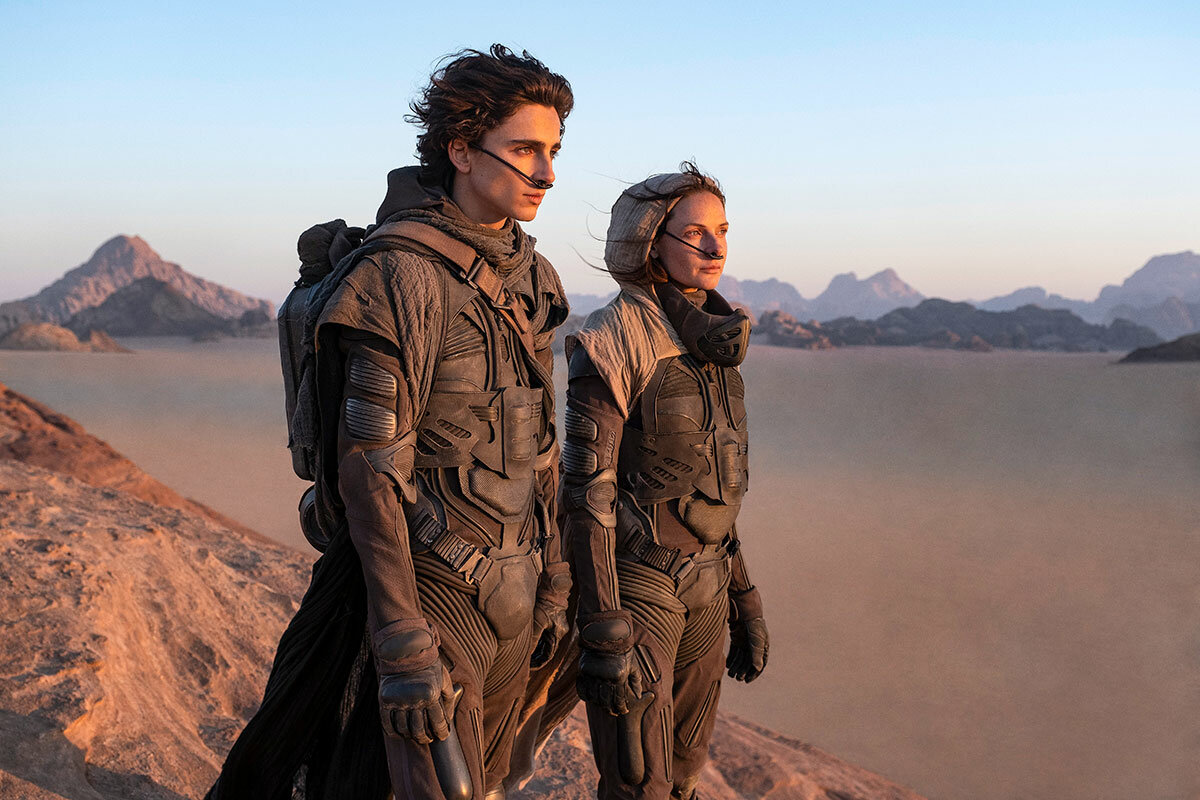
-
By Peter Rainer Special correspondent
Sci-fi classic ‘Dune’ returns to the big screen. Does it succeed?
From the time it was first published in 1965, “Dune,” Frank Herbert’s densely convoluted sci-fi classic, was ritually referred to as “unfilmable.” This hasn’t stopped directors from trying to film it anyway. Alejandro Jodorowsky tried for years in the 1970s before finally giving up. David Lynch’s infamous 1984 version, which he disowned after his producers recut it against his wishes, was followed in 2000 by a Syfy channel adaptation that few remember. Denis Villeneuve’s “Dune,” starring Timothée Chalamet, is the latest and certainly the most anticipated attempt, not least because the pandemic delayed its release for well over a year.
With this much buildup, was the wait worth it? That depends, I suppose, on how much of a “Dune” fanatic you are. I’m not exactly an aficionado, but the prospect of realizing Herbert’s eco-visionary saga on the big screen, especially at a time when moviegoing audiences are aching to once again be overwhelmed, is palpable.
From a purely pictorial standpoint, this new “Dune” is indeed often overwhelming. The sheer monumentality of it all is impressive. Alas, the film’s emotional power underwhelms.
Like the first half of the book that it follows fairly closely, the movie takes place in the year 10191 in an interstellar galaxy of dueling planetary fiefdoms ruled by an unseen emperor. One of the planets, Arrakis, aka Dune – a sort of colonial outpost with gigantic subterranean sandworms and a clannish, Bedouin-like population – is a parched sandscape prized for its harvested spice that confers supernatural powers and fuels interstellar travel. (Herbert, in all seriousness, called his novel an “environmental awareness handbook.”)
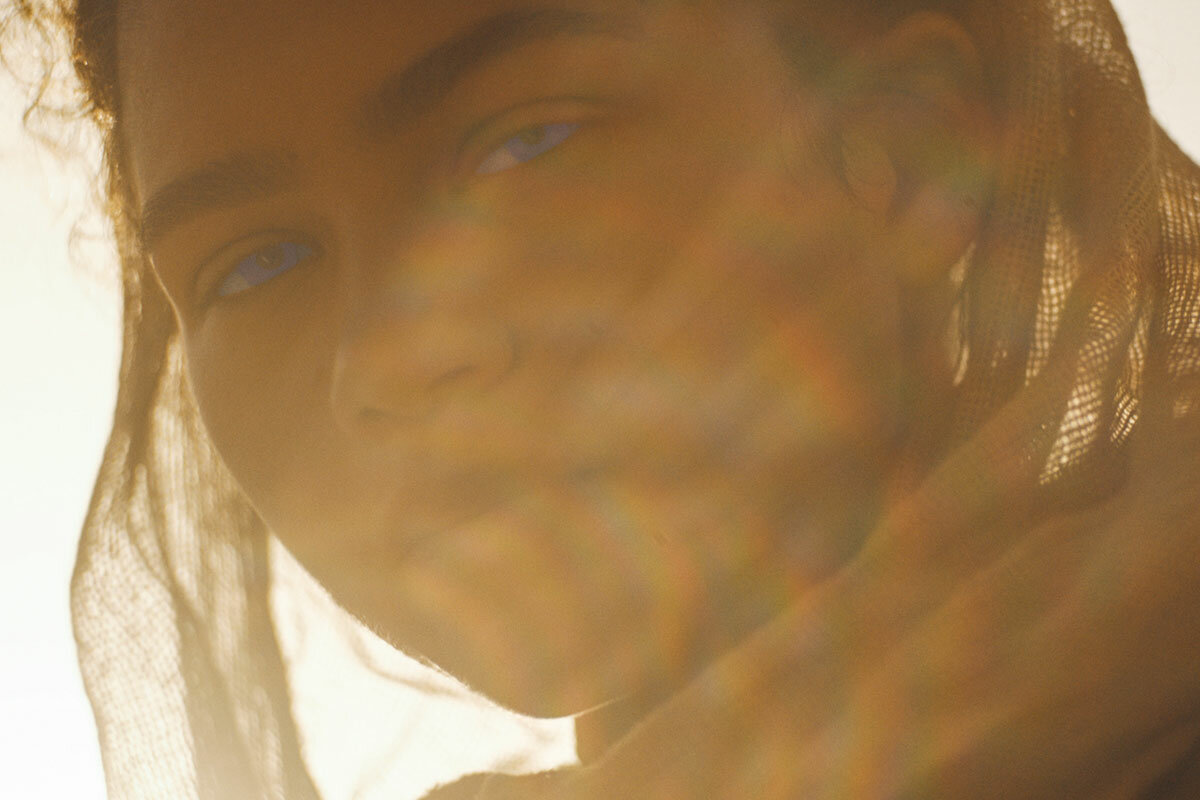
When the film begins, one of the fiefdoms, the harsh House Harkonnen, is ordered off Arrakis by the emperor and control of the planet is ceded to the more egalitarian House Atreides, led by Duke Leto (Oscar Isaac). The duke rightly suspects the emperor is laying a trap for him but nevertheless transfers his trusted lieutenants – played by Josh Brolin and, in the film’s most entertaining performance, Jason Momoa – to the planet along with his concubine Lady Jessica (Rebecca Ferguson) and their son Paul (Chalamet). There’s a great deal more to the story, but lest I demonstrate that “Dune” is not only unfilmable but also unreviewable, I’ll just add that Paul represents that timeworn avatar of sci-fi mythology – the newbie who mutates into a messiah. He’s the savior, or at least the savior-in-training, of this brutal world.
No matter how impressive its special effects, a sci-fi movie ultimately has to do more than just wow us with them. Even though Paul is the spiritual center of this epic, his struggles seem rote. Chalamet has the right poetic-romantic look, but without the impassioned underpinnings. This is partly Villeneuve’s fault; he has a penchant for dwarfing his actors in the frame so they resemble stick figures viewed from an Olympian height.
“Dune” – which is billed as “Dune: Part 1” – has a bigger problem: Because Villeneuve, who also co-wrote the screenplay with Eric Roth and Jon Spaihts, filmed only the novel’s first half, much of the action essentially plays as exposition leading up to a more stirring saga that never comes. After 2 1/2 hours, the film rather apologetically offers up the words: “This is only the beginning.” And yet no sequel is definitively in the works. At least when the first “Lord of the Rings” was served up, we knew we’d eventually get a full meal.
For “Dune” devotees, none of this may matter much. But for those coming to this galaxy for the first time, the sense of incompleteness can’t help but be a letdown. And because Herbert’s visionscape heavily influenced so many subsequent sci-fi epics, especially the “Star Wars” franchise, we may feel as if we’ve seen it all before anyway. I admire any director who is able to create a self-contained world on such a scale, but this is an epic for the eye, not the heart.
Peter Rainer is the Monitor’s film critic. “Dune” is available in theaters and on HBO Max starting Oct.21. The movie is rated PG-13 for sequences of strong violence and some disturbing images and suggestive material.
Other headline stories we’re watching
(Get live updates throughout the day.)The Monitor's View
Rewards for freedom of thought
- Quick Read
- Deep Read ( 2 Min. )
-
By the Monitor's Editorial Board
If the North Korean regime ever collapses on its own, the Nobel Peace Prize ought to go to this group: older people in North Korea. They are now banned from parks because they criticize the regime during their daily chats. After decades of stifling dissent, the regime can’t seem to banish freedom of thought.
That such a freedom exists widely in North Korea is a testament to the power of truth in individual conscience and to the liberty that enables each person to see others as free. Those who advocate for such freedoms are often awarded with international prizes.
This year’s Nobel Peace Prize, for example, went to two journalists for publishing under repressive regimes. Now the European Parliament has given its annual Sakharov Prize for Freedom of Thought to Alexei Navalny, the country’s leading pro-democracy dissident. Despite being poisoned twice and then thrown in prison earlier this year, Mr. Navalny remains a moral center for many Russians.
The European Union’s award is named after a famed dissident during the Cold War, Andrei Sakharov, a Soviet nuclear scientist and human rights advocate. He wrote that freedom of thought is the only guarantee against the mass myths spread by dictatorships.
Rewards for freedom of thought
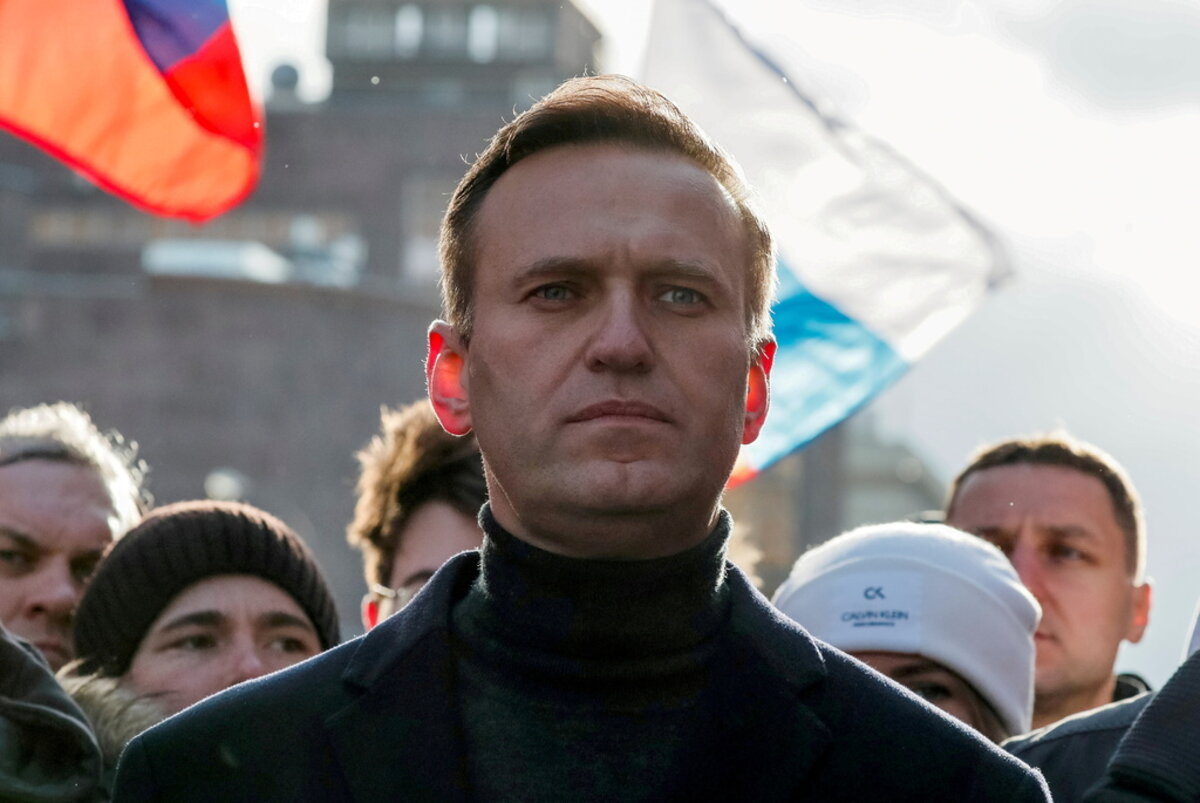
If the North Korean regime ever collapses on its own, the Nobel Peace Prize ought to go to this group: older people in North Korea. According to Radio Free Asia, these citizens are now banned from parks and other public places because they criticize the regime too much during their daily chats. After decades of forcefully stifling dissent, the regime can’t seem to banish freedom of thought.
That such a freedom exists widely in North Korea is a testament to the power of universal truth in individual conscience and to the liberty that enables each person to see others as free. Those who practice and advocate for such freedoms are often awarded with international prizes.
This year’s Nobel Peace Prize, for example, went to two journalists, one in Russia and the other in the Philippines, for publishing under repressive regimes. Now the European Parliament has given its annual Sakharov Prize for Freedom of Thought to another Russian: Alexei Navalny, the country’s leading pro-democracy dissident and corruption fighter.
According to the BBC, the award took “the Russian blogosphere by storm.” Despite being poisoned twice and then thrown in prison earlier this year, Mr. Navalny remains a moral center to many Russians who oppose President Vladimir Putin and the country’s massive corruption – which Mr. Navalny frequently exposed.
He won the award for “great courage in his attempts to restore the freedom of choice to the Russian people.” But as his Anti-Corruption Foundation tweeted Oct. 20, the award is for “all caring people who, even in the darkest times, are not afraid to tell the truth.”
One possible effect of the award might be that it keeps Mr. Navalny from harm. Mr. Putin may not be able to hold him or let him die now that the European Union has firmly embraced the dissident and his cause.
Repression is often driven by a leader’s fear of losing power, either over people or over ideas. The EU’s award is named after a famed dissident during the Cold War, Andrei Sakharov, a Soviet nuclear scientist and human rights advocate. He wrote that freedom of thought is the only guarantee against the mass myths spread by dictatorships.
Even older people in North Korea know that, despite decades of attempted brainwashing. Liberty of conscience is liberation from fear. The more prizes the better for the champions of this simple idea.

A Christian Science Perspective
Each weekday, the Monitor includes one clearly labeled religious article offering spiritual insight on contemporary issues, including the news. The publication – in its various forms – is produced for anyone who cares about the progress of the human endeavor around the world and seeks news reported with compassion, intelligence, and an essentially constructive lens. For many, that caring has religious roots. For many, it does not. The Monitor has always embraced both audiences. The Monitor is owned by a church – The First Church of Christ, Scientist, in Boston – whose founder was concerned with both the state of the world and the quality of available news.
Which sense are you relying on?
- Quick Read
- Read or Listen ( 3 Min. )
-
By Blythe Evans
Taste, touch, sight, smell, hearing – we’re all familiar with the five physical senses. But it’s our inherent spiritual sense that reveals our identity as God’s children, paving the way to healing in the manner that Jesus taught.
Which sense are you relying on?
In keeping with the science curriculum at the elementary school where I used to teach first grade, I taught my young pupils about the five physical senses. As part of the lesson, I also wanted to help them recognize that there is substance to be found beyond what those material senses reveal. So I asked the children if their parents loved them.
“Oh, yes,” they all replied.
“How do you know?” I queried them. “You can’t see love, or hear or smell or taste it.”
They were not to be deterred. “You know love by how it feels in your heart,” they informed me.
Ah, yes. This illustrates our spiritual sense, or what we intrinsically know that goes much deeper than the material senses. Spiritual sense enables us to recognize what is genuinely true about ourselves and others as children of God – no matter what the material senses exhibit.
Christ Jesus demonstrated this more acutely than anyone. Mary Baker Eddy, the discoverer of Christian Science, writes of Jesus, “His senses drank in the spiritual evidence of health, holiness, and life;...” (“Science and Health with Key to the Scriptures,” p. 52). Material sense might present a picture of someone who was sick, blind, or immoral, but Jesus never accepted that as true about God’s spiritual offspring. The entirely good God, divine Spirit, created man – all of us – as spiritual, whole, harmonious, and healthy.
Jesus’ certainty of the spiritual reality enabled him to heal and redeem lives. In her “Miscellaneous Writings 1883-1896,” Mrs. Eddy explains, “Jesus regarded good as the normal state of man, and evil as the abnormal; holiness, life, and health as the better representatives of God than sin, disease, and death” (p. 200).
One time, when Jesus entered a synagogue, he noticed a man with a deformed hand. But Jesus did not accept that material sense picture as the true, spiritual status of the fellow. Jesus told the man to stretch out his hand, and then all who were present saw the hand was now as perfect as the other one (see Mark 3:1-5). The spiritual reality Jesus discerned through spiritual sense prevailed over the presentation of material sense, and that brought the healing.
We might ask ourselves how we get spiritual sense. In fact, because we are the children, or reflection, of divine Spirit, it is as innate in each of us as it was in my little students who told me they knew in their hearts that their parents loved them. And we can cultivate it by keeping our thoughts on God, relying on divine Spirit to inform us of what’s real – only what is good, virtuous, honest, and upright. This enables us to experience healing.
Recently a friend texted me that she was on a business trip and not feeling at all well. She found it difficult to even sit up in bed, and lots of “what ifs” were swirling around in her head.
We decided to pray together, taking a stand that spiritual sense alone would inform us about her health. In God there is no “what if,” only “what is.” We affirmed that all existence is based on one divine Principle – God. And God is Love, so the governing Principle of life must be Love. And divine Love, Principle, includes only good for each of us, so anything not beneficial cannot truly be part of our identity.
As we recognize this, what isn’t good and true begins to fall away from our experience. As Science and Health promises, “To those leaning on the sustaining infinite, to-day is big with blessings” (p. vii).
That’s what happened with my friend. In the afternoon, I received another message saying she was making progress and feeling better. At the end of the day she reported that she’d been able to successfully make her presentations, and she was able to move freely. The problem didn’t return.
Our spiritual sense is always present, in every circumstance, to “open [our] eyes, so that [we] may behold wondrous things out of [God’s] law” (Psalms 119:18, New Revised Standard Version).

A message of love
Sky dancing
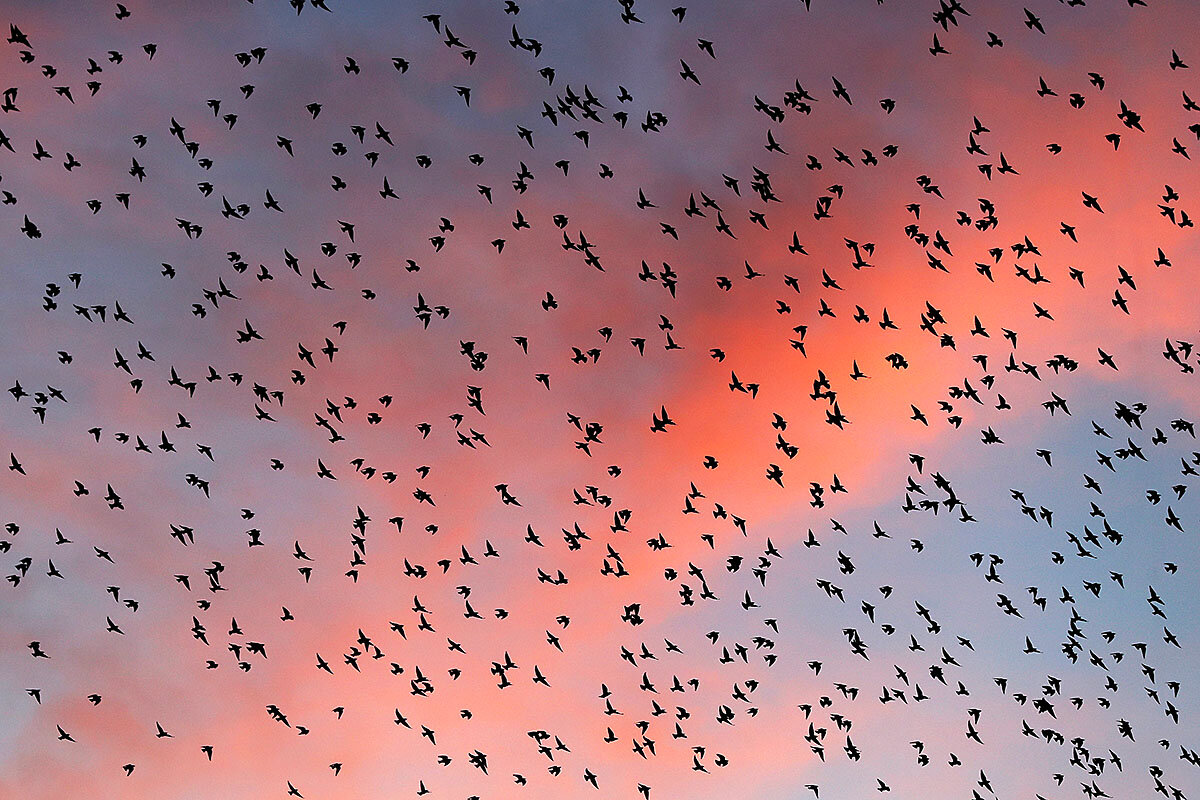
A look ahead
Thank you for joining us. Please come back tomorrow when we look at how everything from mask mandates to Afghanistan has made Americans angry. We talk to Americans who have engaged with their communities to channel that energy in useful and enlightening ways.


